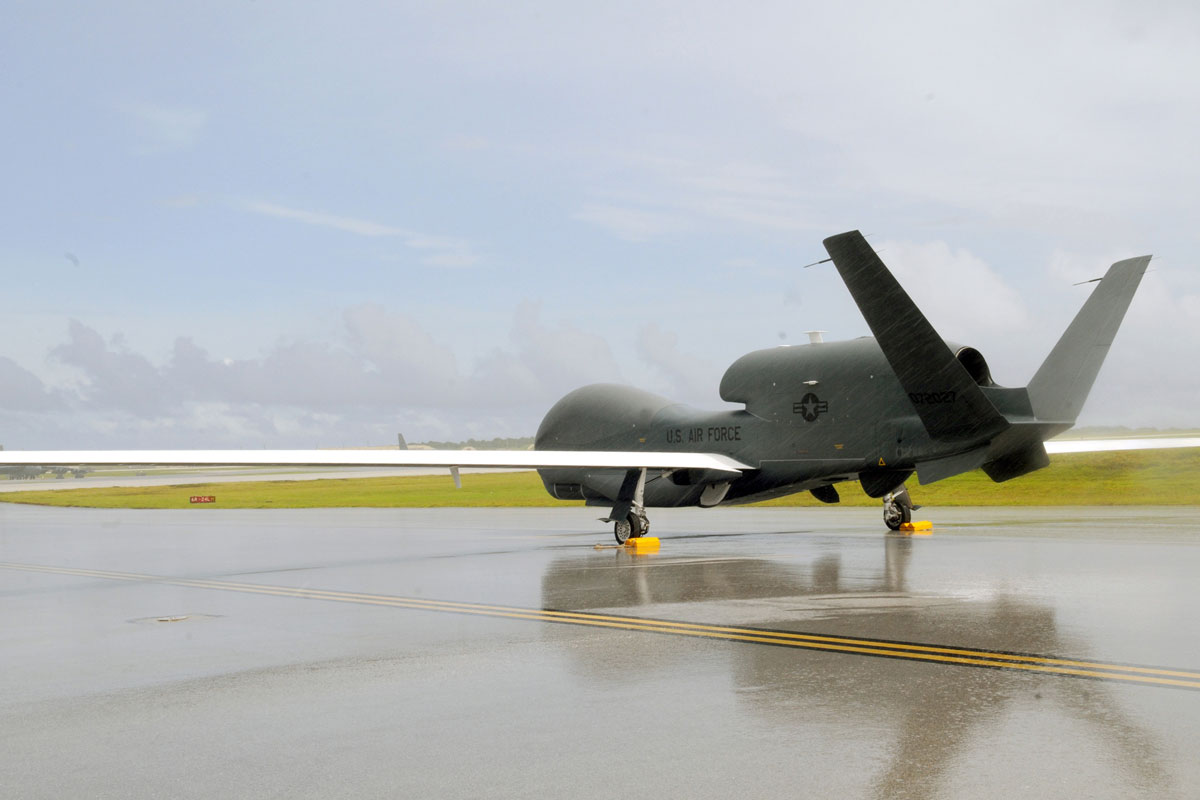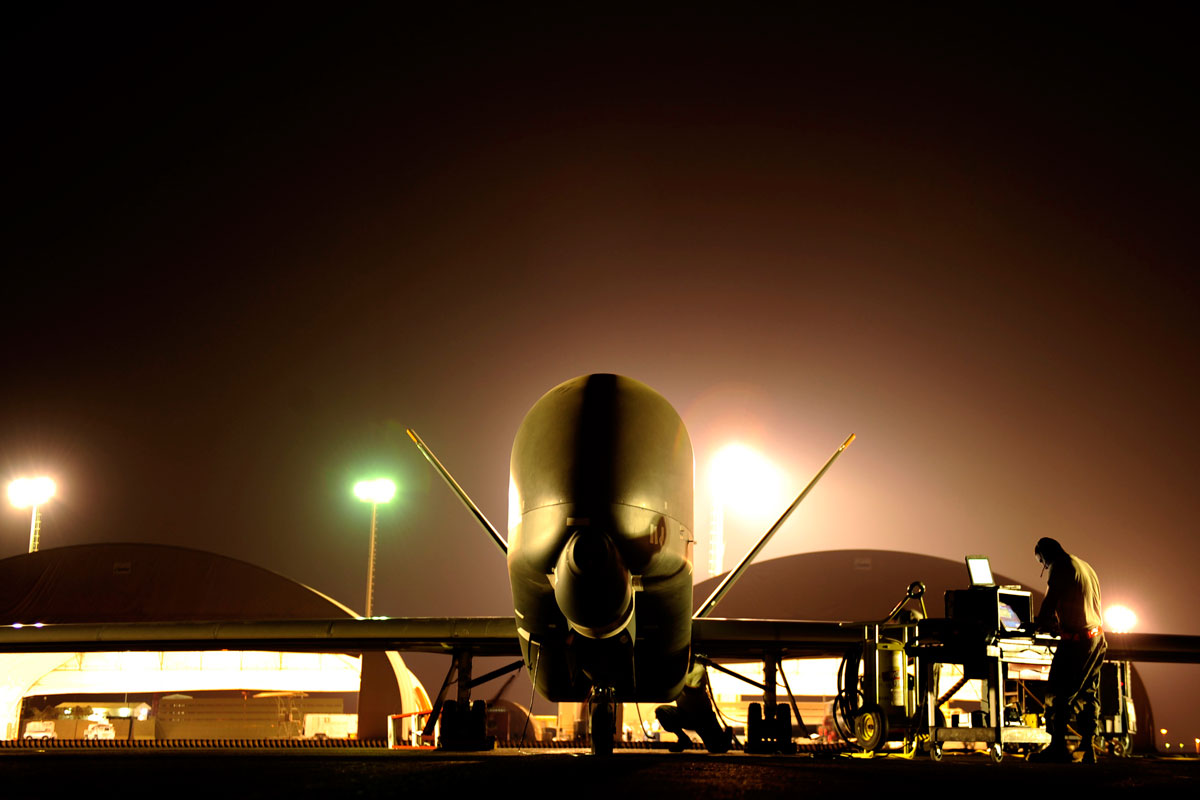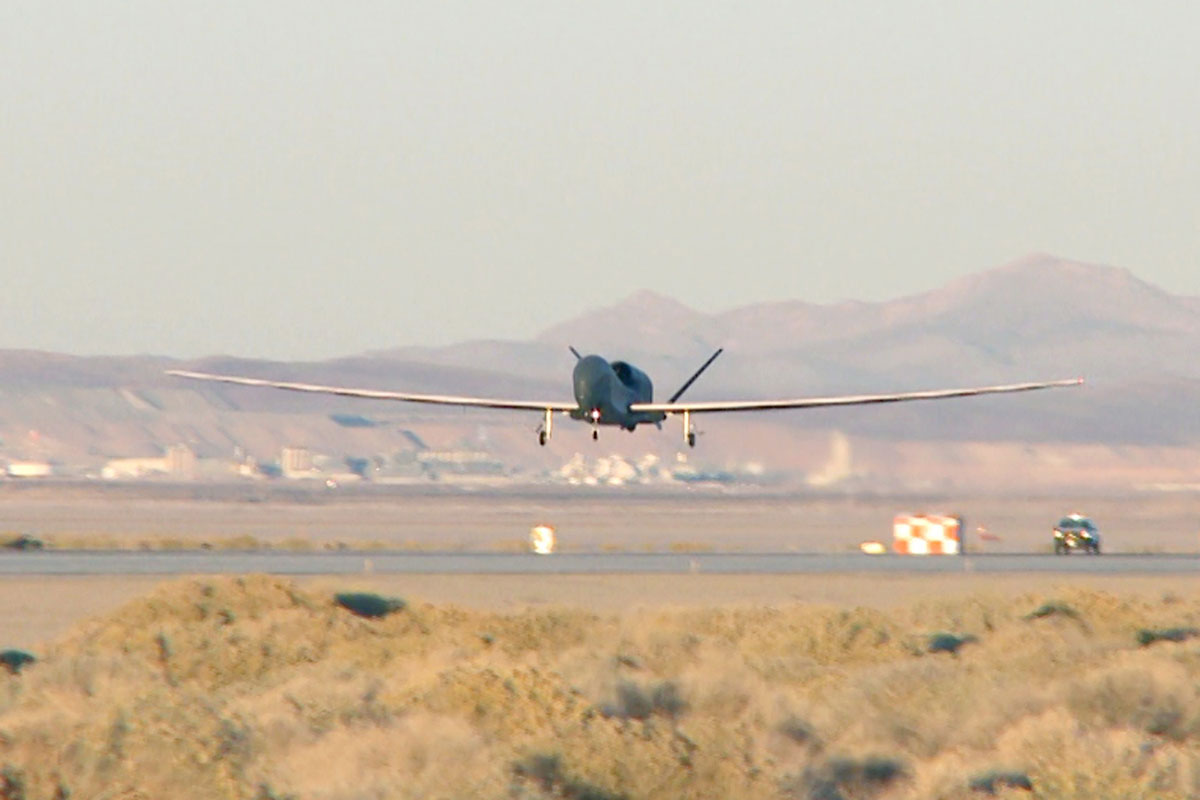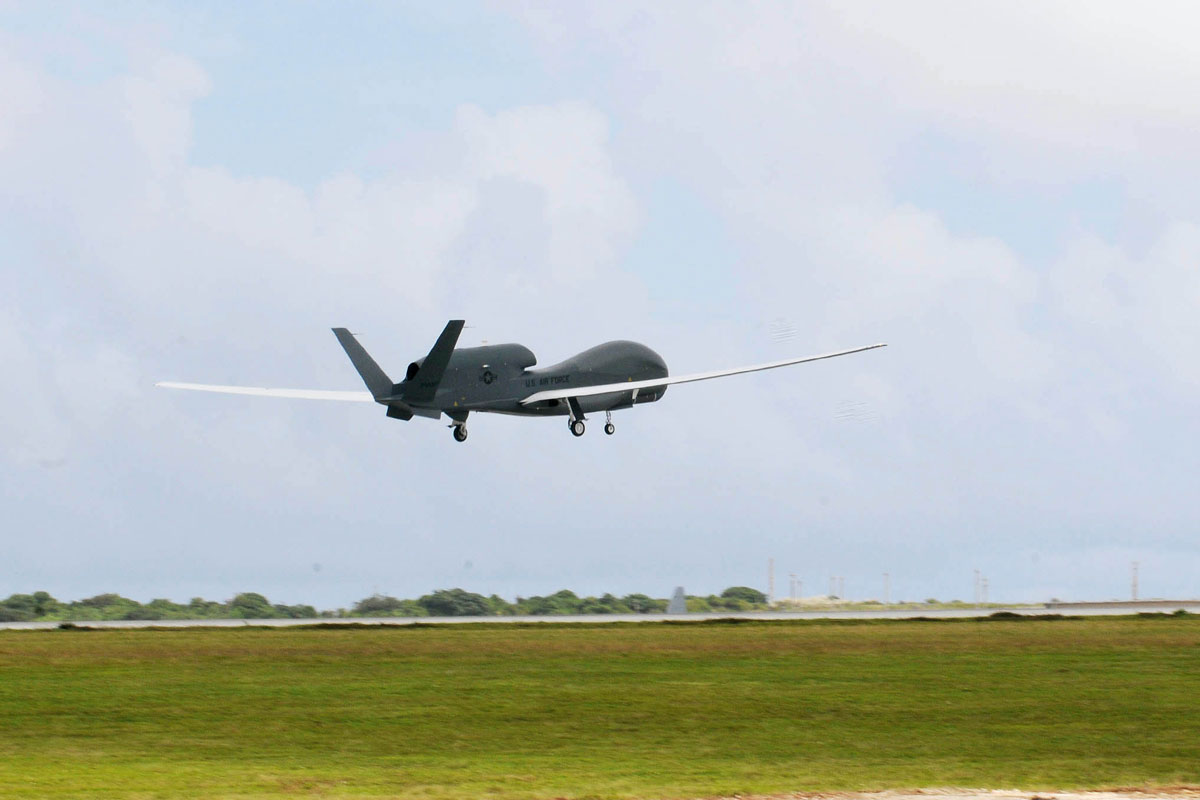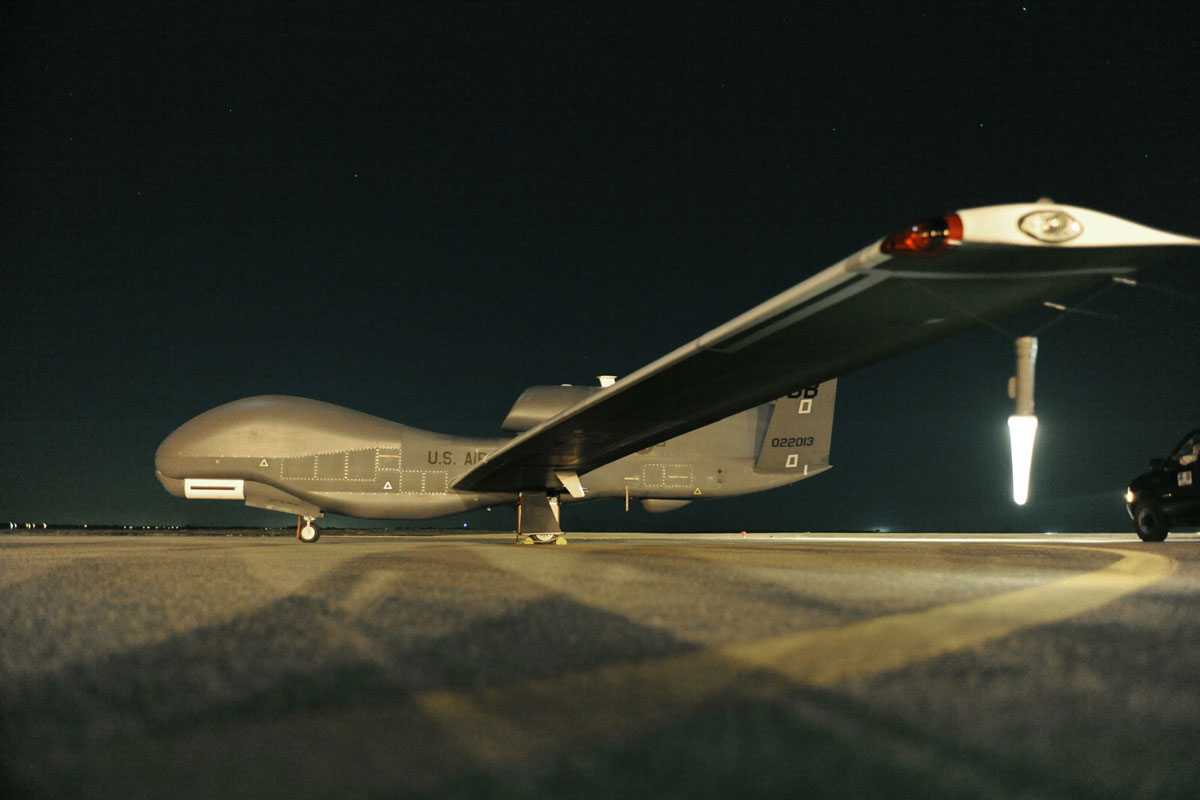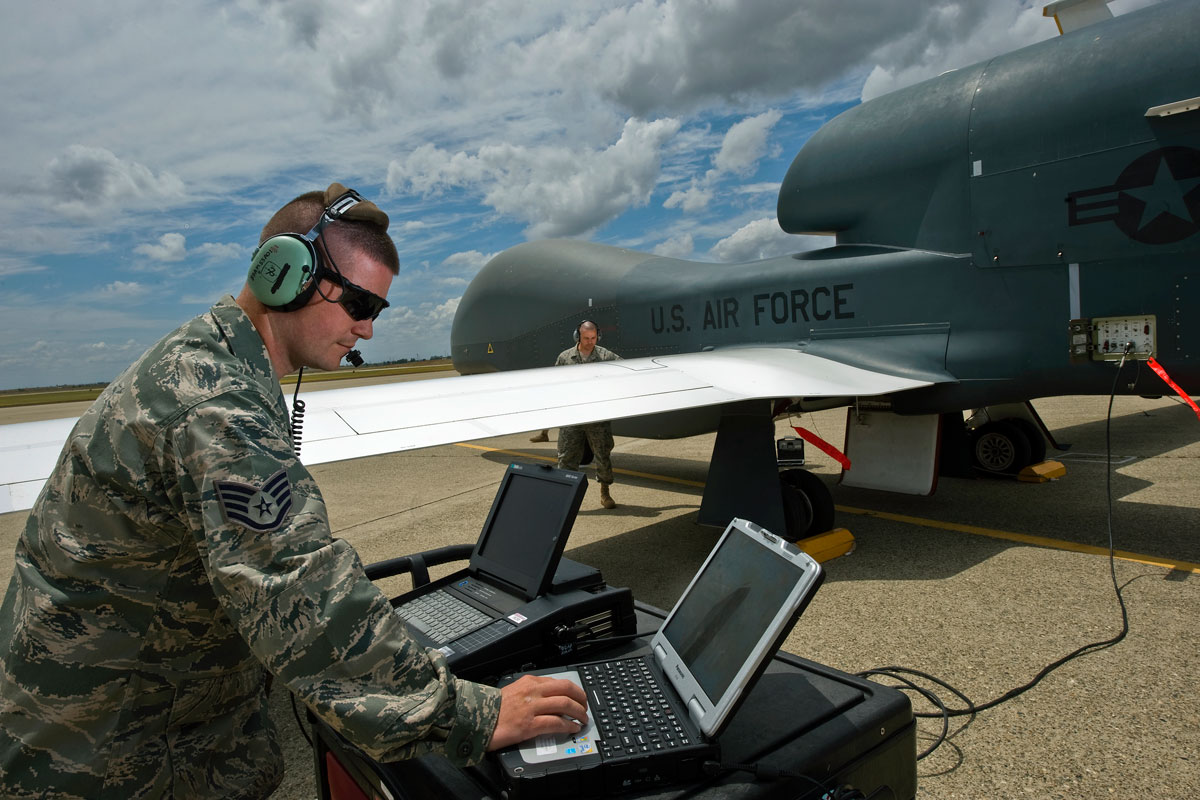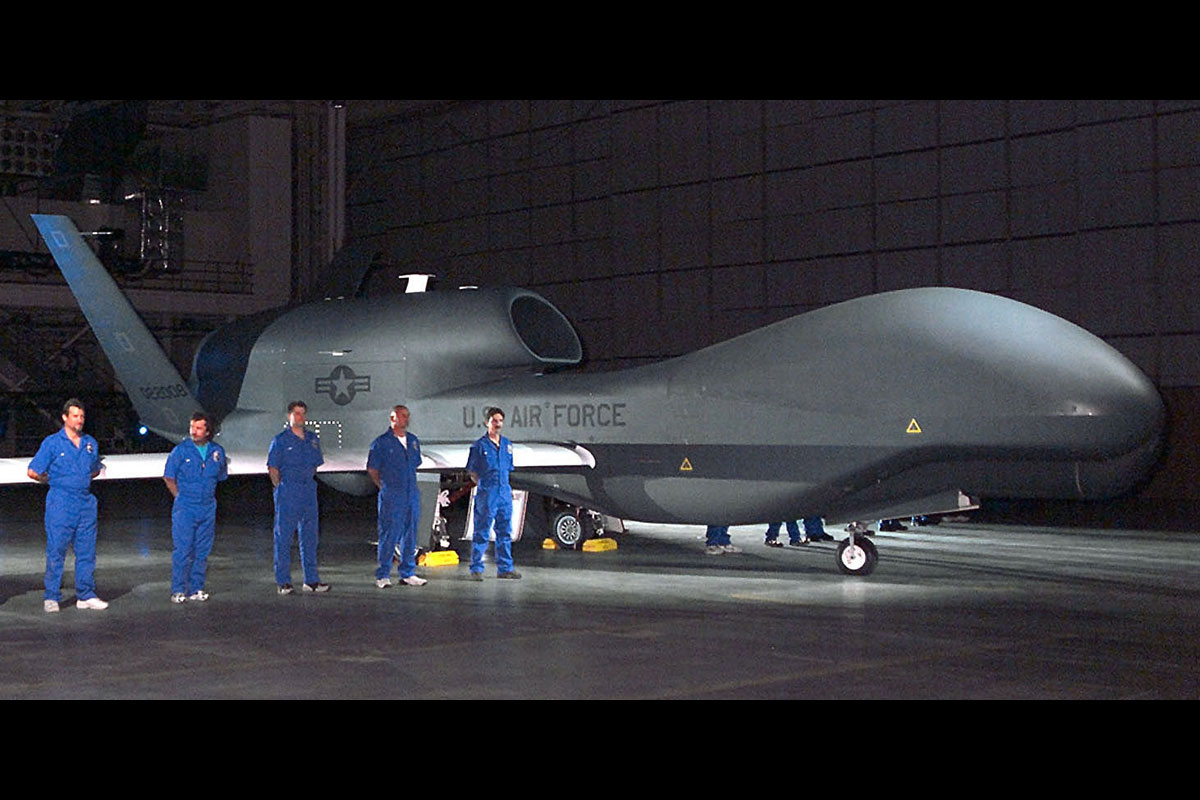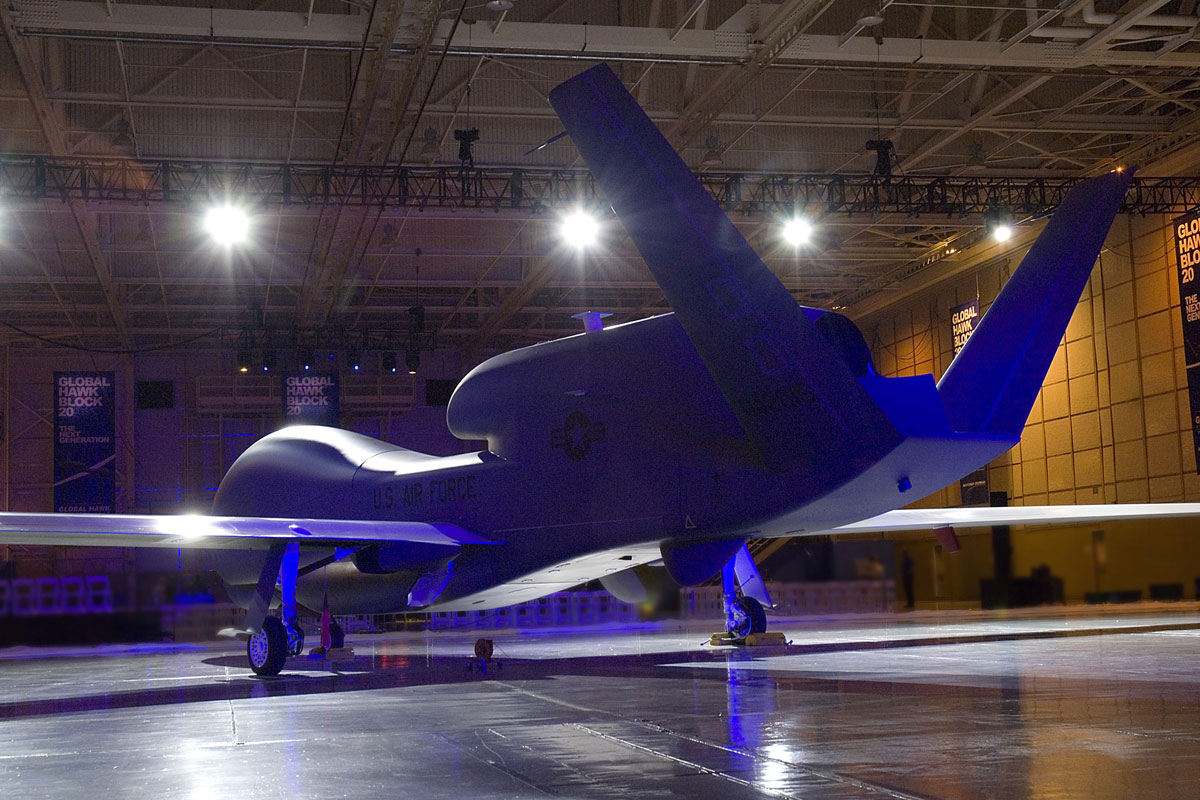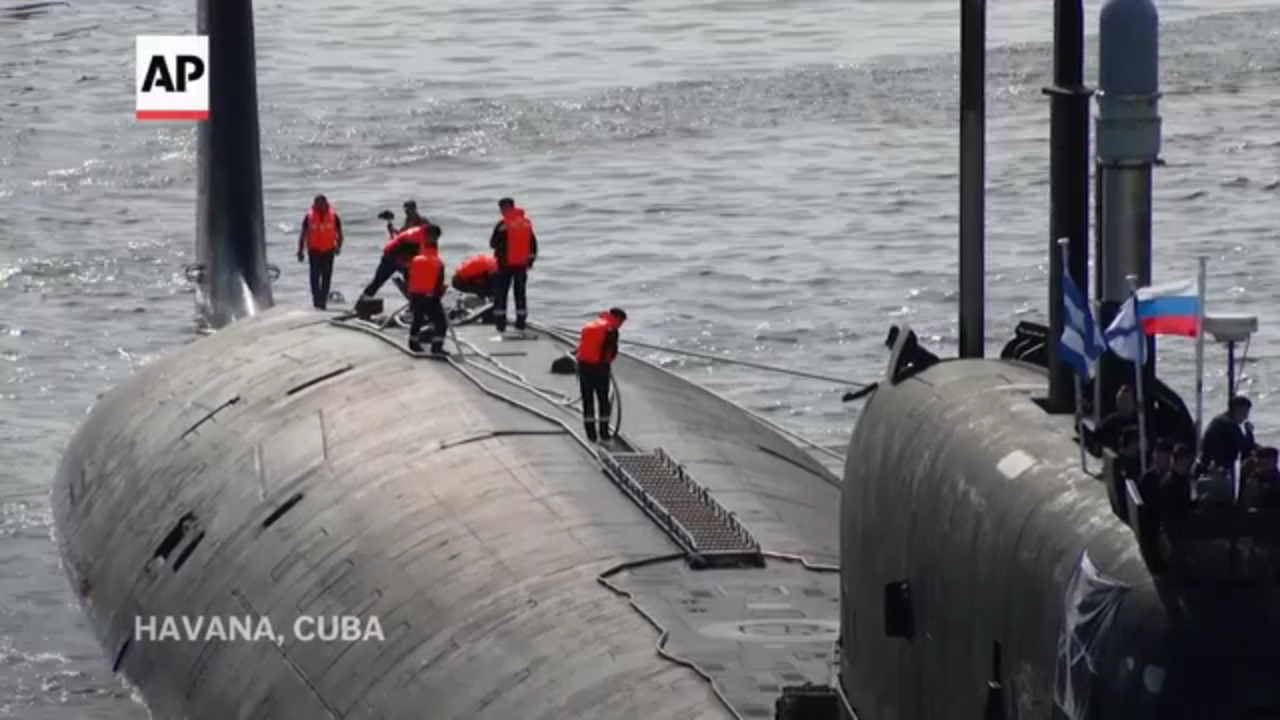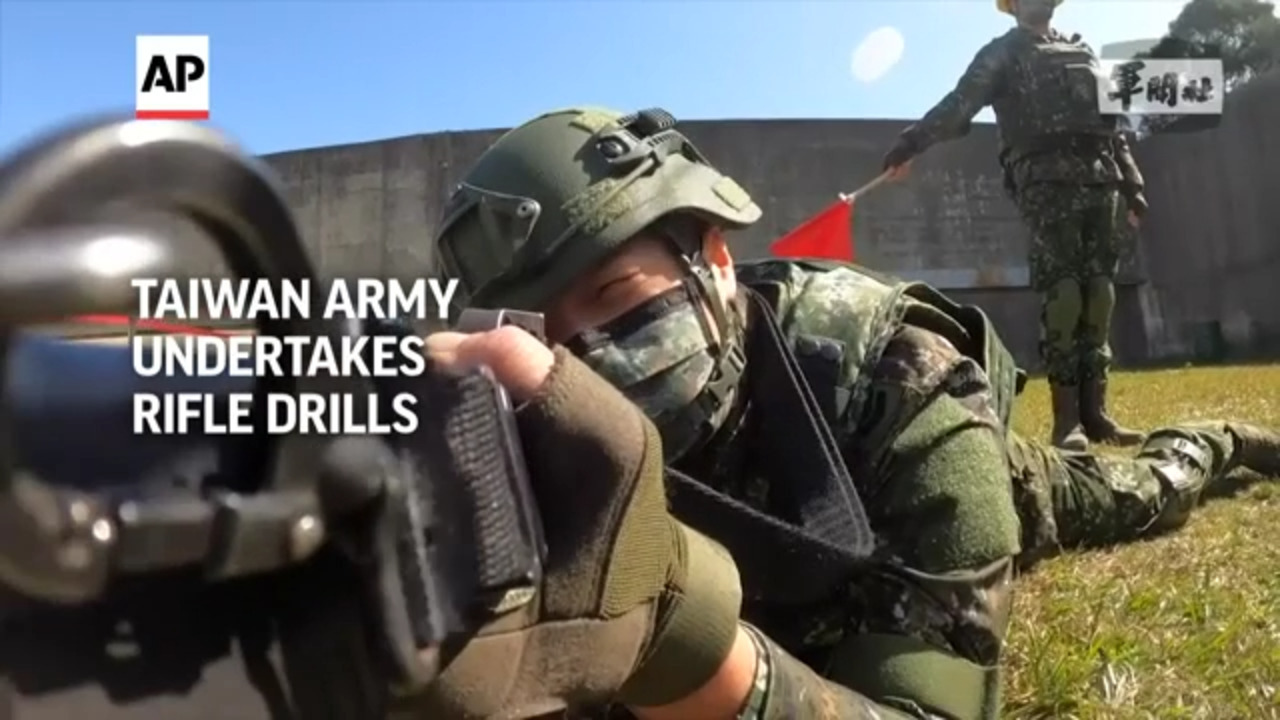Manufacturer: Northrop Grumman, Raytheon, L3 Comm
Service: USAF, U.S. Navy
Power Plant: Rolls Royce-North American F137-RR-100 turbofan engine
Speed: 310 knots
Range: 8,700 nm
Armament: None
Crew (remote): Three (LRE pilot, MCE pilot, and sensor operator)
The RQ-4 Global Hawk is a high-altitude, long-endurance unmanned aircraft system with an integrated sensor suite that provides intelligence, surveillance and reconnaissance, or ISR, capability worldwide. Global Hawk's mission is to provide a broad spectrum of ISR collection capability to support joint combatant forces in worldwide peacetime, contingency and wartime operations. The Global Hawk complements manned and space reconnaissance systems by providing persistent near-real-time coverage using imagery intelligence, or IMINT, and signals intelligence, or SIGINT, sensors.
Global Hawk is produced in four distinct blocks. Seven Block 10 aircraft were procured, but were retired from the inventory in FY11. Block 20s were initially fielded with IMINT only capabilities, but four Block 20s will be converted to an EQ-4 communication relay configuration carrying the Battlefield Airborne Communication Node (BACN) payload. Block 30 is a multi-intelligence platform that simultaneously carries electro-optical, infrared, synthetic aperture radar (SAR), and high and low band SIGINT sensors. Block 30 Initial Operating Capability (IOC) was declared in August 2011. Eleven Block 30s are currently fielded with IMINT sensors and support every geographic combatant command as well as combat missions in Operations Enduring Freedom and Iraqi Freedom/ New Dawn. Block 30s also supported Operation Odyssey Dawn in Libya and humanitarian relief efforts during Operation Tomodachi in Japan. SIGINT sensors will be added to all Block 30s starting in fiscal 2012. Block 40 will carry the Radar Technology Insertion Program (RTIP) active electronically scanned array radar which will provide SAR and Ground Moving Target Indicator (GMTI) data. Block 40 IOC is projected in fiscal 2014.
Global Hawk is flown by a Launch Recovery Element (LRE), and a Mission Control Element (MCE). The LRE is located at the aircraft base and functions to launch and recover the aircraft while en route to and from the target area. The MCE controls the Global Hawk for the bulk of the ISR mission. Like the LRE, the MCE is manned by one pilot, but adds a sensor operator to the crew. Command and control data links enable complete dynamic control of the aircraft. The pilot workstations in the MCE and LRE are the control and display interface (cockpit) providing aircraft health and status, sensors status and a means to alter the navigational track of the aircraft. From this station, the pilot communicates with outside entities to coordinate the mission (air traffic control, airborne controllers, ground controllers, other ISR assets).
The sensor operator workstation provides capability to dynamically update the collection plan in real time, initiate sensor calibration, and monitor sensor status. The sensor operator also assists the exploitation node with image quality control, target deck prioritization and scene tracking to ensure fluid operations.
The system offers a wide variety of employment options. The long range and 28+ hour endurance allow tremendous flexibility in meeting mission requirements.
Global Hawk began as an Advanced Concept Technology Demonstration in 1995. The system was determined to have military utility and provide warfighters with an evolutionary high-altitude, long-endurance ISR capability. While still a developmental system, the Global Hawk has been deployed operationally to support overseas contingency operations since November 2001. The Global Hawk UAS provides near-continuous adverse-weather, day/night, wide area reconnaissance and surveillance.
In the RQ-4 name, the "R" is the Department of Defense designation for reconnaissance and "Q" means unmanned aircraft system. The "4" refers to the series of purpose-built remotely piloted aircraft systems. The "E" in EQ-4 delineates the communication configuration of the BACN equipped aircraft.
The Global Hawk is operated by the 12th Reconnaissance Squadron at Beale Air Force Base, Calif., and the 348 RG at Grand Forks AFB, N.D. The 1 RS provides formal training and is located at Beale AFB.
